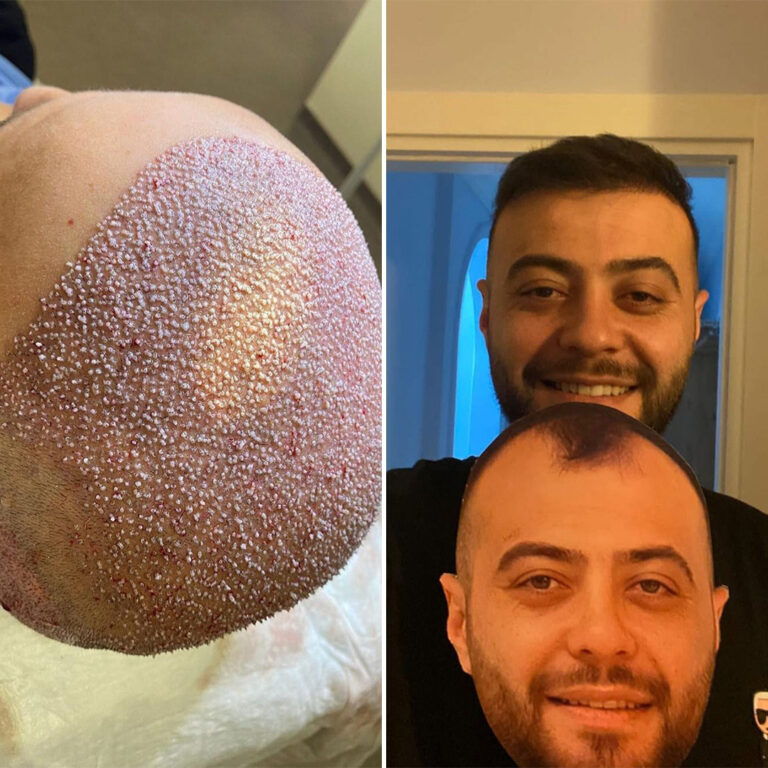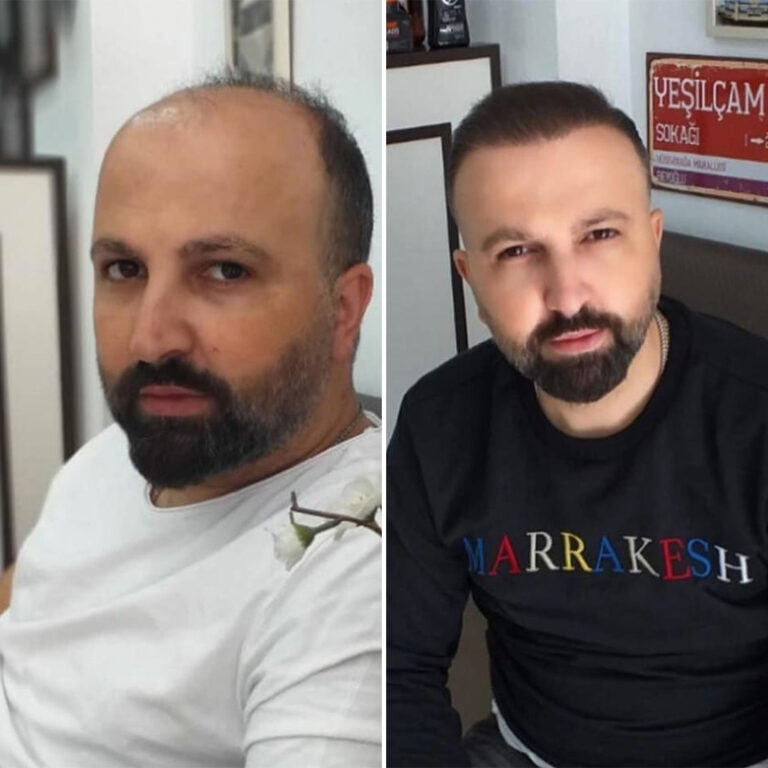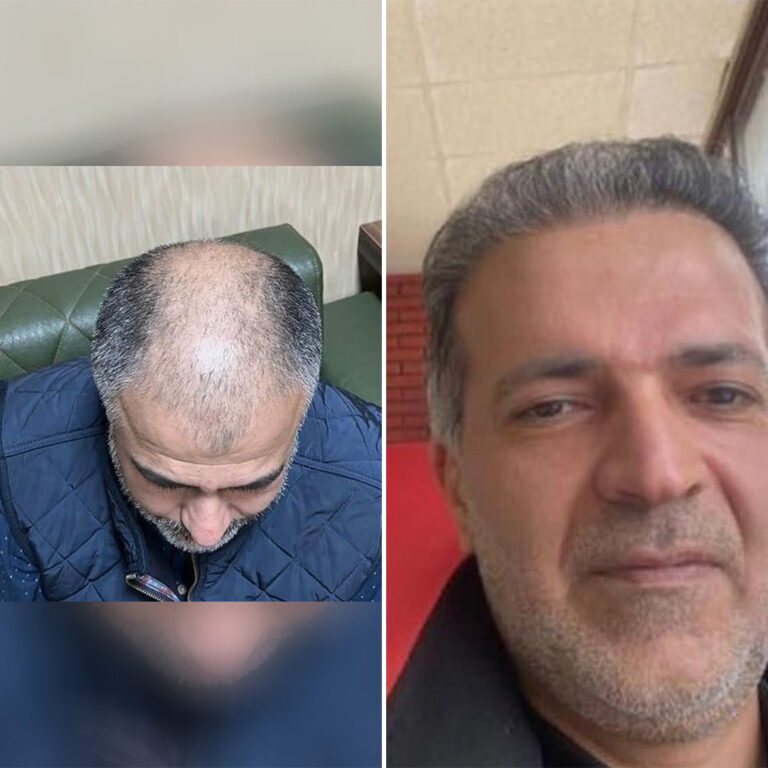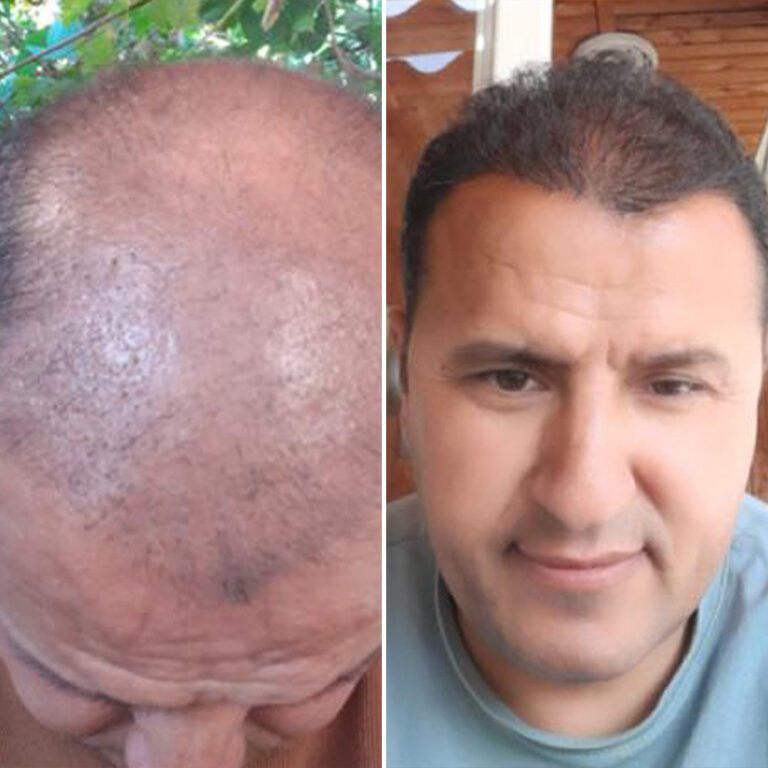Hair Transplantation

How does a hair transplant procedure work?
Hair transplant surgery involves taking hair follicles from one area of the body—typically the rear of the scalp, where hair is more resistant to balding—and transplanting them to a balding or hairless portion of the scalp. The purpose of a hair transplant is to encourage new hair growth where there has previously been thinning.
Follicular unit transplantation (FUT) and follicular unit extraction (FUE) are the two basic approaches of hair transplantation. In FUT, a surgically excised strip of skin from the donor area that contains hair follicles is subsequently divided into individual follicular units. The follicular units are carefully inserted into small incisions created in the skin after being collected. How is hair transplant done?
These operations almost have a century background. The techniques seem same but they depend on the patients’ conditions.
Generally, the process starts and follows these steps;
Extracting hair follicles from donor area
Creating holes on transplantation area
Transplanting the healthy follicles
Hair Transplant Applications and Techniques
Most commonly the FUE Hair Transplant Technique is being used, which is extracting the hair follicles by a special device and transplanting them. This technique is developing day by day. Punch size changes according to patients’ hair thickness.
These punches typically range between 0.6-0.7-0.8mm in diameter. Growth angle of hair and quality change depending on the creation of holes. Creating holes is being mentioned with FUE Technique. If we summarize these hair transplant techniques; sapphire FUE, percutaneous FUE, lateral slit FUE, vertical slit FUE, Gold FUE, Robotic Hair Transplantation and DHI Hair Transplant.
First thing to consider while extracting the follicle is determining the donor area. Qualified follicles should be extracted from qualified areas. Second thing to consider is punch’s size. This size should be determined by a professional otherwise there isn’t going to be natural image and there might be some scars.
Hair Transplant Turkey
Hair transplant is a serious micro-surgical operation and local anesthesia is applied on patients. It should be done at full-fledged hospitals by experts in plastic surgery. That’s the reason the hair transplant clinic that you chose must satisfy you with its experience and assure you with its referrences.
Clinicaeste is a Professional Hair Transplant Center in Turkey.
Would you like to work with an exciting organization and a dynamic company which has been applying its Professional Hair Transplantation Services for its patients in over 20 years?
What is hair transplant and how it works?
Hair transplant is a surgical procedure that involves harvesting hair follicles from one part of the body, typically the back of the scalp where hair is more resistant to balding, and transplanting them to an area of the scalp that has thinning or no hair. The goal of hair transplant is to restore hair growth in areas where hair loss has occurred. There are two main methods of hair transplant: follicular unit transplantation (FUT) and follicular unit extraction (FUE). In FUT, a strip of skin containing hair follicles is surgically removed from the donor area and then dissected into individual follicular units. Once the follicular units are harvested, they are carefully implanted into tiny incisions made in the recipient area of the scalp. The surgeon meticulously places the follicular units in a way that mimics the natural pattern of hair growth, taking into consideration the direction, angle, and density of the existing hair. This requires skill and artistic precision to achieve natural-looking results.
The transplanted hair follicles then undergo ahealing process, and ov er time, they start to grow new hair. It may take several months for the transplanted hair to start growing normally, and the final results of a hair transplant can take up to a year or more to fully manifest. Hair transplant is a permanent solution for hair loss, as the transplanted hair follicles are typically resistant to the effects of DHT (dihydrotestosterone), the hormone that causes male pattern baldness.
The success of a hair transplant depends on various factors such as the quality and quantity of donor hair, the expertise of the surgeon, and the patient’s overall health and lifestyle. It is important to consult with a qualified and experienced hair transplant surgeon to determine if you are a suitable candidate for the procedure and to discuss your individual expectations and potential risks.
How long do hair transplants last?
Hair transplants are generally considered to be a permanent solution for hair loss, as the transplanted hair follicles are usually resistant to the effects of DHT (dihydrotestosterone), the hormone that causes male pattern baldness. Once the transplanted hair starts to grow, it typically follows the natural hair growth cycle and can continue to grow for a lifetime.
However, it’s important to note that not all transplanted hair may survive and continue to grow. The success of a hair transplant depends on various factors such as the quality and quantity of donor hair, the expertise of the surgeon, and the patient’s overall health and lifestyle.
Some patients may require multiple hair transplant sessions to achieve the desired results, especially if they have extensive hair loss or if they desire increased hair density. It’s also worth mentioning that even after a successful hair transplant, the natural aging process and genetic factors may still affect the remaining non-transplanted hair on the scalp, and further hair loss may occur in the future.
Therefore, it’s important for patients to have realistic expectations and understand that hair transplants do not stop the natural progression of hair loss, but rather redistribute healthy hair follicles to areas with thinning or no hair.
To ensure the longevity of the results, it’s crucial to follow the post-operative care instructions provided by the hair transplant surgeon, which may include avoiding certain activities or medications that could negatively impact the transplanted hair follicles. Regular follow-up appointments with the surgeon can also help monitor the progress of the hair transplant and address any concerns or issues that may arise.
Is hair transplant good or bad?
Hair transplant can be a good solution for individuals experiencing hair loss and seeking to restore their hairline and improve their appearance. It is generally considered safe and effective when performed by a qualified and experienced hair transplant surgeon in a suitable candidate.
Here are some potential benefits of hair transplant: Natural-looking results: A well-executed hair transplant can provide natural-looking results that blend seamlessly with the patient’s existing hair. The transplanted hair typically grows and behaves like natural hair, allowing patients to style and care for it just like their original hair. Permanent solution: Hair transplant is often considered a permanent solution for hair loss, as the transplanted hair follicles are usually resistant to the effects of DHT, the hormone that causes male pattern baldness. Once the transplanted hair starts to grow, it can continue to grow for a lifetime.
Improved self-esteem and confidence: For many individuals, hair loss can have a significant impact on their self-esteem and confidence. Restoring a fuller head of hair through a hair transplant can help improve one’s self-image and quality of life, enhancing self-confidence and emotional well-being.
Customizable results: Hair transplant procedures can be tailored to meet the unique needs and goals of each patient. The surgeon can design the hairline, density, and overall appearance of the transplanted hair to achieve the desired aesthetic outcome. However, like any surgical procedure, hair transplant also has potential risks and limitations, and it may not be suitable for everyone. Risks and complications may include infection, scarring, bleeding, poor hair growth, and dissatisfaction with the results.
It’s important to thoroughly research and consult with a qualified hair transplant surgeon to determine if you are a suitable candidate for the procedure and to discuss potential risks and benefits based on your individual circumstances Ultimately, whether hair transplant is considered “good” or “bad” depends on the individual’s perspective, expectations, and the specific circumstances. It’s important to carefully weigh the potential benefits and risks, and make an informed decision based on realistic expectations and thorough consultation with a qualified healthcare professional.
Why do people prefer Turkey for hair transplant?
Turkey has become a popular destination for hair transplant procedures for several reasons: Cost-effective: Hair transplant procedures in Turkey are often more affordable compared to other countries, such as the United States, Europe, and some Middle Eastern countries. This makes Turkey an attractive option for individuals seeking cost-effective solutions for their hair loss.
Quality healthcare facilities: Turkey has a well-established and rapidly growing healthcare industry with modern facilities and advanced technology. Many hair transplant clinics in Turkey are equipped with state-of-the-art facilities and highly experienced and qualified hair transplant surgeons. Skilled and experienced surgeons: Turkey has a large number of skilled and experienced hair transplant surgeons who have expertise in performing hair transplant procedures. Many of these surgeons have been trained in leading international institutions and are known for their expertise in the field.
High patient volume and experience: Due to the high demand for hair transplant procedures in Turkey, many clinics and surgeons have extensive experience in performing a large number of hair transplants, which can contribute to their expertise and skill in the procedure.
Comprehensive packages: Many hair transplant clinics in Turkey offer comprehensive packages that include not only the hair transplant procedure itself but also accommodation, transportation, and post-operative care. This can make the overall experience more convenient and cost-effective for patients traveling from abroad.
Tourism opportunities: Turkey is a country with a rich history and culture, offering various tourism opportunities for patients who wish to combine their hair transplant procedure with a vacation. Patients can enjoy the cultural heritage, beautiful landscapes, and warm hospitality of Turkey while undergoing their hair transplant procedure. It’s important to note that while Turkey has become a popular destination for hair transplants, it’s crucial to thoroughly research and choose a reputable and qualified clinic and surgeon to ensure the safety and success of the procedure
. Patients should also consider factors such as the reputation of the clinic and surgeon, the quality of facilities and equipment, the reviews and testimonials of previous patients, and the follow-up care provided after the procedure.
What is the best age for hair transplant?
The ideal age for hair transplant can vary depending on various factors, including the extent of hair loss, the stability of the hair loss pattern, the overall health of the individual, and their expectations and goals for the procedure . However, in general, the following age-related considerations are typically taken into account when determining the best age for hair transplant:
Age of maturity: Hair transplant is generally not recommended for individuals who have not yet reached their age of maturity, which is typically considered to be 18 to 21 years old. This is because the pattern of hair loss may not be fully established before this age, and it’s important to allow sufficient time for the hair loss pattern to stabilize before considering a hair transplant.
Stable hair loss pattern: It’s important to ensure that the individual’s hair loss pattern has stabilized before undergoing a hair transplant.
This means that the hair loss has progressed to a point where the pattern and extent of hair loss are not expected to change significantly in the near future. If hair loss is still active or progressing rapidly, a hair transplant may not be adisable as the transplanted hair may be susceptible to further hair loss, resulting in an unnatural appearance.
Psychological maturity: Undergoing a hair transplant is a personal decision that requires psychological maturity and realistic expectations. It’s important for individuals considering a hair transplant to have a mature understanding of the procedure, potential outcomes, and realistic expectations about the results.
Overall health: Good overall health is important for the success of a hair transplant procedure. Individuals should be in good physical and mental health, and free from any underlying medical conditions that may increase the risks associated with the surgery or affect the healing process.
Psychological readiness: Hair loss can have a significant emotional impact, and it’s important for individuals to be psychologically prepared for the changes that may come with a hair transplant. his includes being prepared for the recovery process, potential scarring, and the time it takes for the transplanted hair to grow.
It’s important to consult with a qualified hair transplant surgeon who can assess your individual circumstances and rovide personalized recommendations on the best age for a hair transplant based on your specific situation.
A thorough evaluation and discussion of your hair loss pattern, overall health, and expectations will help determine the most appropriate timing for a hair transplant procedure.
Will I lose my hair again after transplant?
Hair transplant procedures involve transferring healthy hair follicles from one part of the body (typically the back or sides of the scalp) to areas with thinning or no hair (e.g., the hairline or crown) to restore hair growth.
The transplanted hair follicles are usually resistant to the effects of DHT
(dihydrotestosterone), which is the hormone responsible for causing hair loss in individuals with genetic pattern baldness. In most cases, the transplanted hair follicles continue to grow hair in the recipient area after a successful hair transplant procedure.
However, it’s important to note that the transplanted hair is not immune to other types of hair loss, such as hair loss due to medical conditions, medications, or other factors that may affect the overall health of the hair follicles. Additionally, if the underlying cause of hair loss, such as genetic pattern baldness, is not addressed, hair loss may continue to progress in other areas of the scalp that were not treated with the hair transplant. It’s also important to note that hair transplant results can vary from person to person, and not all transplanted hairs may survive and continue to grow.
Some hair shedding or temporary hair loss, known as “shock loss,” may occur after a hair transplant, but this is usually temporary and the transplanted hairs should start regrowing within a few months.
To maintain the results of a hair transplant and minimize the risk of further hair loss, it’s important to follow the post-operative care instructions provided by your hair transplant surgeon, and to address any underlying medical conditions or lifestyle factors that may contribute to hair loss.
Regular follow-up appointments with your hair transplant surgeon can also help monitor the progress of the transplanted hairs and address any concerns or questions you may have.
Fill our Online Consultation form. Our Specialists will contact you as soon as possible to inform you about doctor’s consultation and will answer all of your questions.



